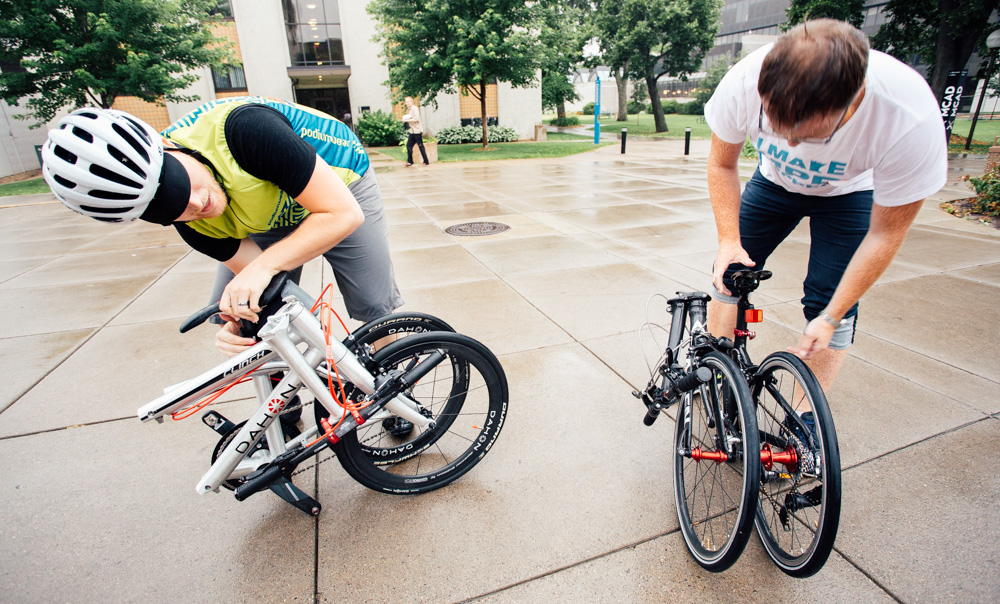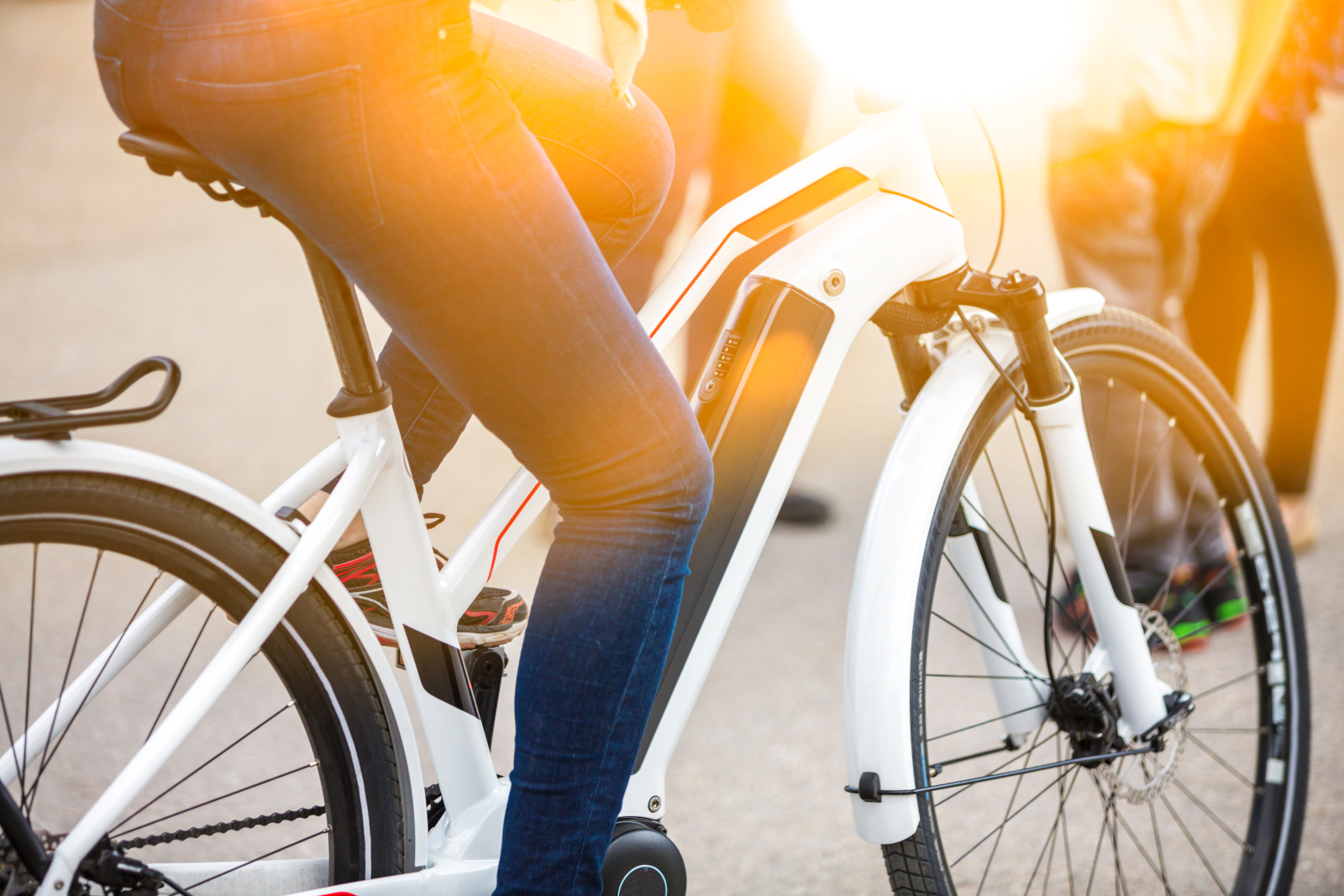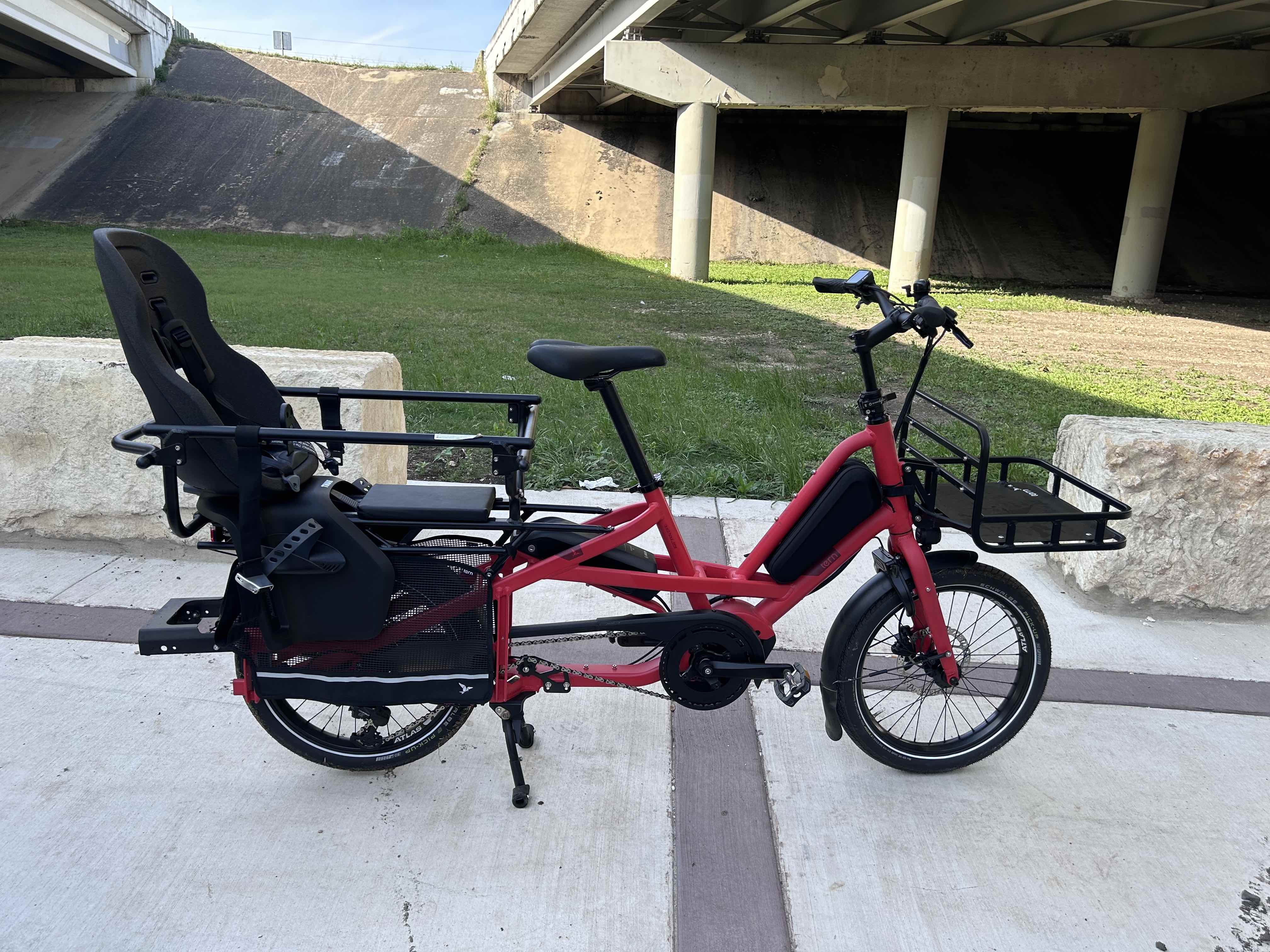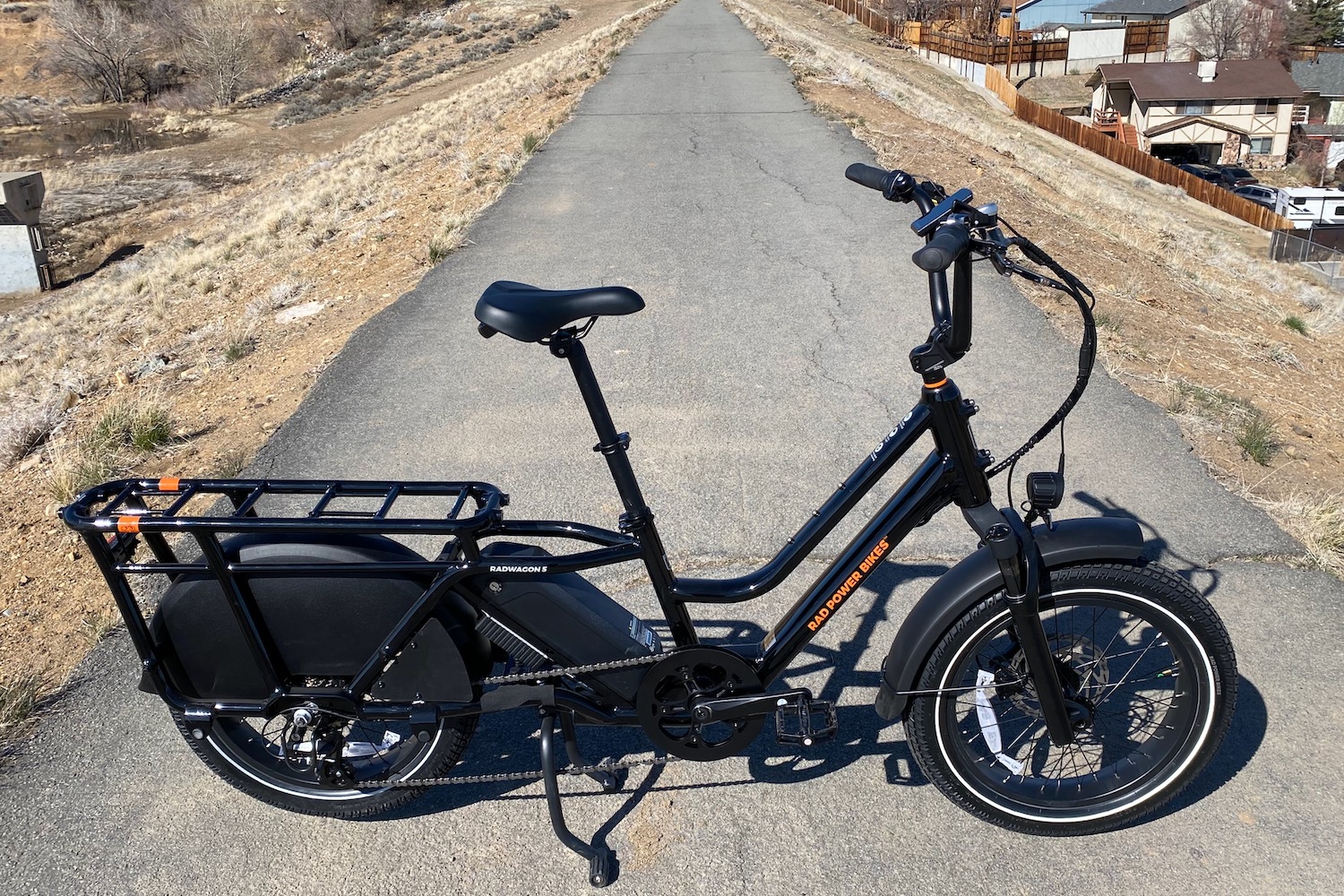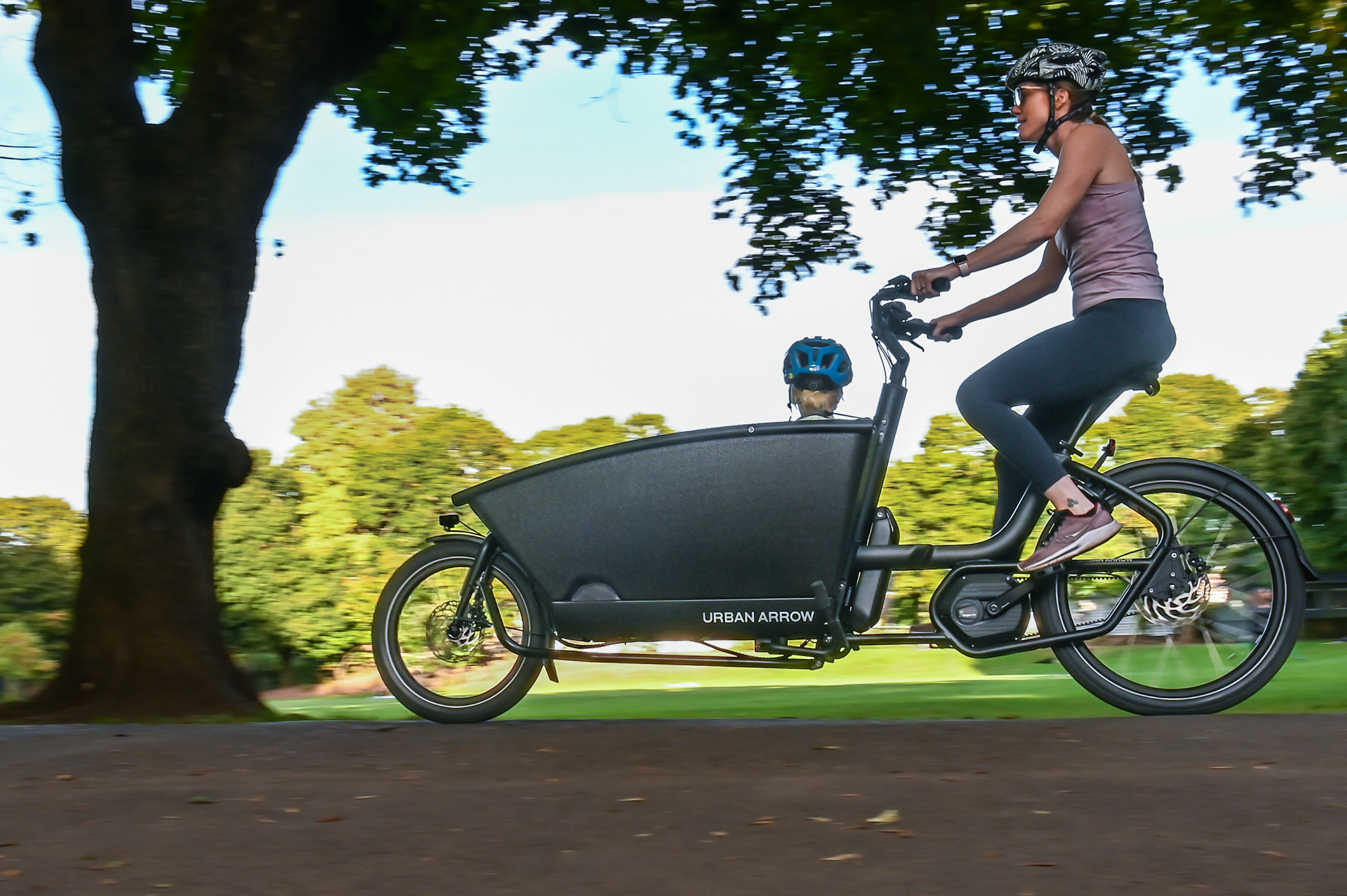[leadin]Folding bikes are a practical solution for riders in need of a portable ride. Most are reasonably priced, but when we saw these $5,000 folders we couldn’t help but balk.[/leadin]

We got these “bikes for the yachting crowd” (or wealthy commuters) in-house and tested them head-to-head. The models, the Dahon Clinch D10 and Allen UltraX, are among the priciest fold-up bikes made. They cost $5,000 apiece!
Aaron and the Dahon Clinch D10

The Clinch D10 is the flagship of Dahon’s folding bikes. With an account-draining $5,000 price tag, this thing is spec’d more like a Grand Tour rig than a folding bike, with carbon fiber handlebars, carbon fiber wheels, and high-end components.
Dahon added “hidden hinges” to this model, which require an allen wrench to tighten and loosen. This does make the bike a little more ridged although it ups the assembly time considerably.
You would probably expect to find the Clinch D10 on a mediterranean yacht for use while riding through the Italian countryside. We tested it in the city instead with Aaron Smith, a former bike-shop manager and a veteran rider who now works at Podium Wear.
Patrick and the Allen Ultra X

This ultralight folder from Allen weighs just shy of 19 pounds. We had Patrick Stephenson, founder of 30 Days Of Biking and a folding-bike owner, test it out.
The bike’s feather-weight comes from more carbon fiber than an IndyCar. Its frame, bars, seat post, clamps and even the saddle are all carbon.
Sporting a more traditional hinged design, the Ultra X has two locking clamps that allow the bike to fold and unfold. This greatly decreased the time it took to break down and assemble the bike.
Allen markets its bike to “high end commuters” who are looking for something sleeker and faster than a standard folder.
Also priced at $5,000, the Ultra X is going to run you the same price as a used Corolla, but what do you expect with all that carbon fiber?
Assembly Test
One mark of any good folder is how quickly it assembles and can be broken down. We started with each bike in its fully disassembled state and had Aaron and Patrick assemble their bikes as quickly as they could.
Patrick was able to assemble the Ultra X in under 10 seconds, which is pretty good considering he had only broken it down and assembled it once before. The Cinch D10 took a considerably longer time at 1 minute 14 seconds, although the pedals were off when he started and the frame required a wrench to tighten.
Editors Note: This is a little like the comparing of apples and oranges. As we mentioned above, the Dahon Clinch D10 has “hidden hinges” and requires a tool to tighten. The Ultra X has just the two hinges to worry about. The poor Dahon was doomed from the beginning.
The Ride Test
We had Patrick and Aaron take their bikes through a closed course of tight turns and obstacles to see how the bikes rode and handled. It had recently rained, so the roads and sidewalks were slick.
Both bikes negotiated the tight turns in our course without ejecting their riders. Folding bikes can take a while getting used to and don’t really ride or feel like conventional bikes.
After doing a few laps of the course, we asked the riders what they thought of the bikes.
Aaron and the Clinch D10: “The front end of the bike felt very jittery and unstable in the turns.” A few testers confirmed that; this bike has a “twitchy” front end and requires you keep both hands on the handlebars at all times. The ride is stiff overall and feels more stable at higher speeds; it’s not built for going slow.
Patrick and the Ultra X: “I liked the way it rode and it felt stable in the turns. The frame flex was apparent but not too bad. The hard carbon saddle is the most uncomfortable thing I’ve ever sat on but, overall, the bike rides well.”
When pedaling the Ultra X, the biggest thing other riders noticed was how flexible the frame was. This didn’t necessarily surprise us because of the carbon frame and hinges, but it took getting used to.
Overall impressions
This is one tiny bike. See the image above; Patrick is an average-size man and the Allen bike just looks like a clown ride. That said, it rolls fast with its 20-inch wheels and folds small thanks to hinges and a clip on the rear chainstay that allows the bike to be folded to the size of an unwieldy suitcase.

Downsides includes its rock-hard and sharp-edged carbon saddle. There is literally no padding on it, and unless you’re wearing bike shorts, its almost too uncomfortable to ride. Why would a company ever put this saddle on a city bike?
The bike’s design is amazing, and it looks wild. But all the moving pieces and adjustable parts can be a pain. For example, one tester hit his heel on the chainstay clip while pedaling. Another time we adjusted the stem upward and it twisted off center; we stopped to realign and had to spend 30 seconds ratcheting it tight.
Once folded up, the Allen was awesome for carrying around, as it packs small and weighs less than 20 pounds. You can throw it in the trunk of a car or easily beside your seat on public transport.
The Clinch D10 rides and feels like the Cadillac of folding bikes, and it had better at its price. The carbon wheels and bars, with the aluminum frame, make this thing a speed machine. Although the hidden hinges add a little time to the assembly, they contribute to the overall rigidness of the bike, which makes a big difference.
There are a few neat hidden features. A tiny wheel on the bottom of the seat post, for example, lets you roll the bike around when it’s folded up. The pedals detach with a simple maneuver and stow away in the saddle bag. In the handle grip the company includes a wrench for tightening the frame hinge.
Flaws? As noted above, the steering was twitchy. This didn’t inspire confidence while negotiating potholes or traffic. The front wheel pulled left or right on its own slightly, freaking out some testers.
Sticker Shock
As neat as these folding bikes are, it’s hard, if not impossible, to justify the price tags. For $5,000, you could buy a cheap car, a normal bike, public transit fees for a year, and still have money left over. Just because you can make an expensive product doesn’t mean anyone should buy it.
That being said, if you’re looking for a compact and cool-looking bike to store on your mega-yacht, the Clinch D10 or the Ultra X would both make fine candidates.
Dahon Clinch C10
Specs
- Frame: Aluminum
- Fork: Steel
- Handlepost: Inverted clamping system with forged crown
- Drivetrain: 10-speed SRAM Red Rear Derailleur; doubletap shifter
- Wheels: 20″ full carbon
- Brakes: Caliper brakes
Allen Ultra X
Specs
- Frame: Carbon Fiber
- Forks: Carbon Fiber
- Rear Derailleur: Sram X9 10 Speed
- Rims: Carbon
- Crank Set: FSA Carbon
- Tires: 20″ x 1-1/8″
- Shifters: Sram X9 Trigger

